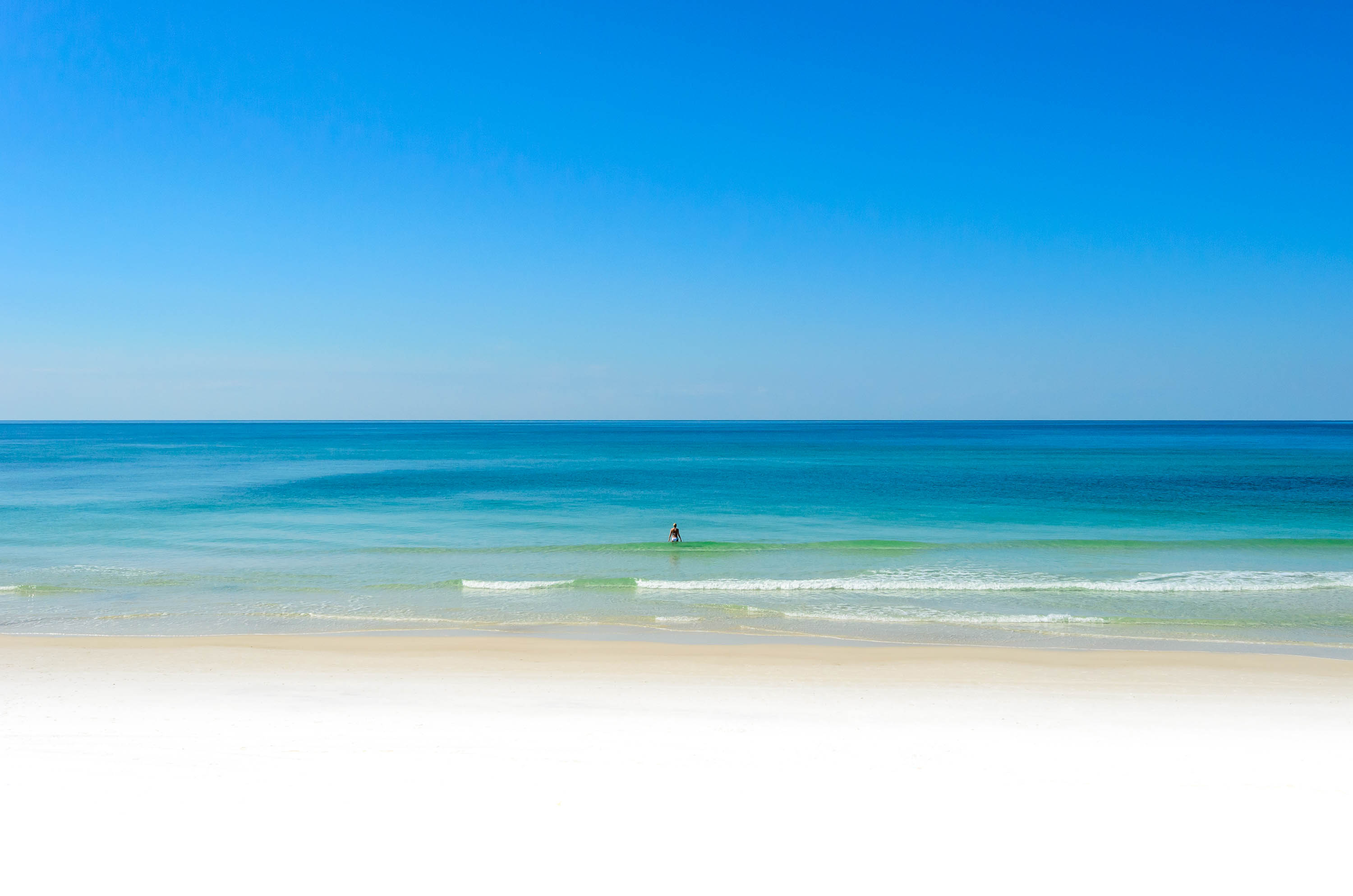We have property in Seacrest and actually were relieved when we saw the beaches after Ivan (because we had heard so many scary things in the press). The front of the dunes were indeed washed away, and they're being built up again now. There isn't any vegetation on them yet, but that will come either through replanting or nature. The sand has a small stream that runs from the dunes to the ocean, but that was there before Ivan and our children play in it to build sand castles and wade (it's great for young children because it's about 2 inches deep at most). In fact, I was hoping that the little stream would still be there after Ivan and am thankful that it is. There are a few piles of black peat exposed, and that's the remnants of what used to be a cypress forest. The sand is now white and clean, the ocean is emerald green, and the sunsets are awesome. I think the biggest difference people will notice is the look of the dunes.
Frankly, I think we've gotten so used to "fake" scenery that we forget what nature really looks like (just like we forget what people really look like because magazines and the press and shows like "The swan" promote the belief that what what nature does isn't good enough so we try to hide our pores and have a "flawless" complexion, get unreasonably thin, tan our skin, and try to hide the fact that we get older - and I think better).
Anyway, back to the topic of the beach. When I was at the beach a few days after Ivan, I thought it was an awesome and humbling sight to see the beach after a hurricane. I was spellbound. As a northerner, I'm new to the "beach life" and am quite naive about how nature works on the coasts. I wish my children had been there with me to experience the aftermath of the hurricane. I never knew that the area had once been a cypress forest and probably would not have learned that if I hadn't seen the peat peaking out through the sand. I would not have seen the changes in the landscape (which I had taken for granted) and understood how mother nature works, nor would I have learned that it is good for the beaches for nature to clean them up once in a while with some good wave action. Ironically, what we see as messy, nature sees as cleaning up.
I wouldn't have learned about the real risks of hurricanes to the endanged beach mouse and sea turtles. I wouldn't have seen the community pull together with gratefulness and helpfulness, as when the upscale restaurant Creola's prepared a free picnic dinner for all of the workers who worked so quickly to get 30A together again within days. Or when people who were in the area took the time to check on the property of others who could not make the trip to the area and thus put their minds at ease. Or when people volunteered to clean the debris off the beach.
The way I see it, we get so used to "fake" (e.g., beaches without any sign that they're nature-made not man-made) that we can't see the natural beauty. A little pile of peat from an age-old forest seems like a blemish rather than a small area for children to explore or a fascinating lesson in ecological changes over time. And when we see the beautiful beaches of South Walton this spring and summer, it will be easy again to forget that nature and humans work together to bring us such an wonderful sight and experience year after year. And I'm counting the days before I can get back there in May (and again in July and again in August with my family)...




So they loaded up the Burb and they moved to GraytonB



 for drilling rig. 55 truckloads of rig equipment due to arrive any day now. High Pointe #1 exploratory oil well will likely spud by June 1st. If successful, offset well will likely be drilled in the vacinity of Rosemary Beach common greenbelt area.
for drilling rig. 55 truckloads of rig equipment due to arrive any day now. High Pointe #1 exploratory oil well will likely spud by June 1st. If successful, offset well will likely be drilled in the vacinity of Rosemary Beach common greenbelt area.